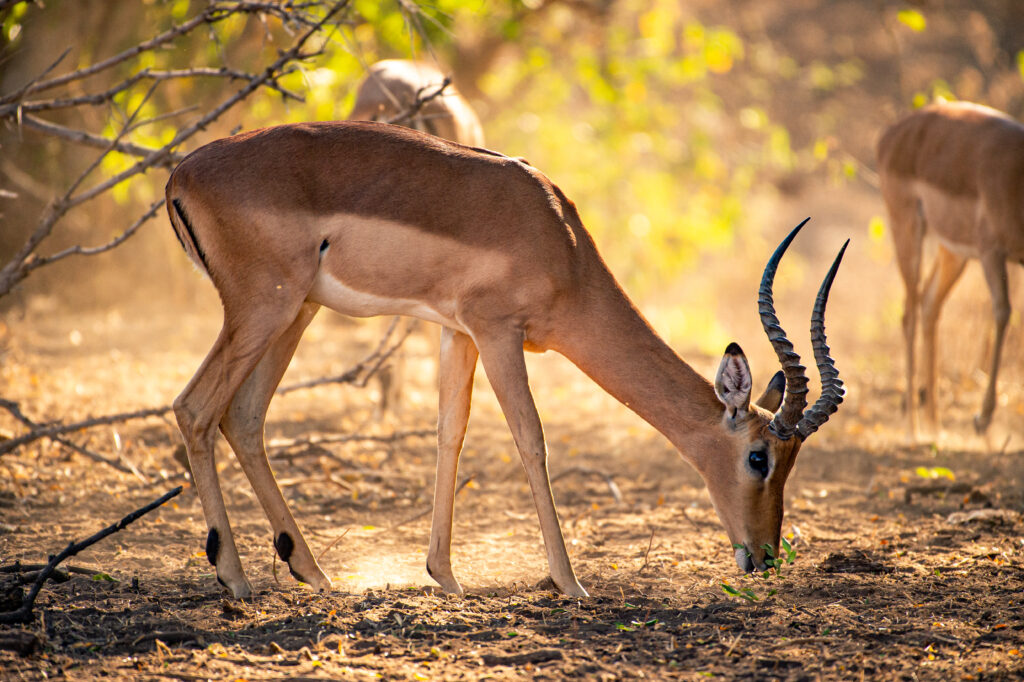Rutt a Tutt
Sara • 04/20/2023
SHARE
Impalas are a dime a dozen in the South African bushveld and there’s a reason behind it. As winter descends on the southern hemisphere, testosterone levels ascend in Impala Rams. The dominant males will dispatch all their competitors by forcing them into aptly named bachelor herds.
Rutting can be a noisy business, full of snorts and growls until there is one leader. This male will then take charge of the females in the herd and mate with as many as he can muster. To add insult to injury, he’ll never mate with the same female twice. This seems quite ruthless and a tad unfaithful, but it is what it is.

Like other species we could name, the ram is so busy mating and chasing other males away that he hardly has any time to eat or groom himself. His tick loads can double, and he can lose his prime condition very quickly.
His competitors are always there – waiting for opportunities to push him out and get some of their genetics into the mix. During the height of the rutt, males can keep their territory for as short as 8 days before being pushed out. Relentless in their pursuit, the forced-out male won’t just slump his head in defeat, he’ll start feeding and conditioning himself again until he is ready to compete for his herd.
Stirring the genetic pot
Wild Dogs play a vital role in the mixing of the impala’s genetic pools. Wild dogs, mainly prey on impalas and a single pack can kill up to 3 Impalas in a day.
Wild Dogs are known as ‘coursers’ and will chase their prey over huge distances, splitting herds and sending them into areas, which they wouldn’t have moved onto by choice. By splitting the herds, naturally allows different genes to be moved into new areas – ensuring that survival of the fittest continues as it should.

